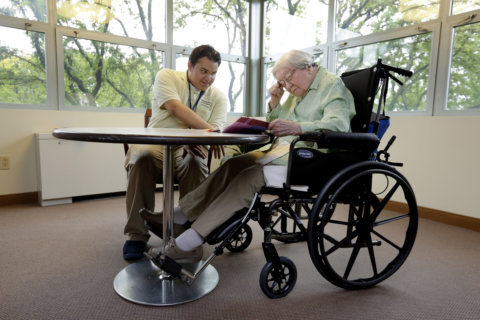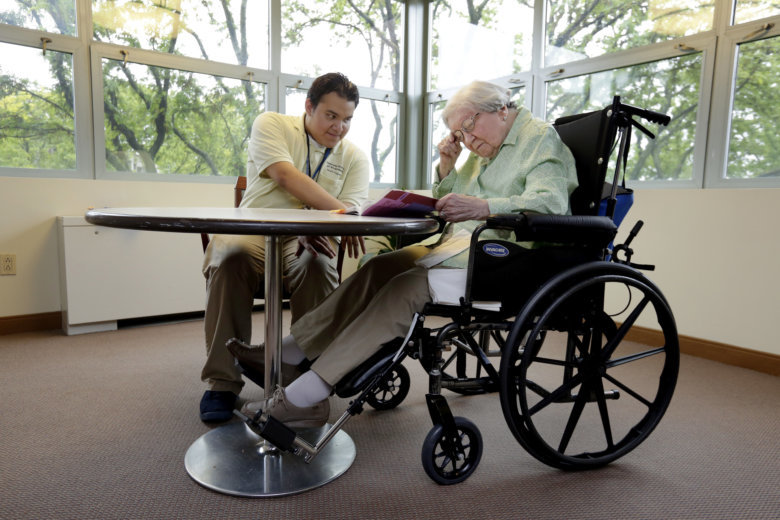
You’ve heard of nursing homes and assisted living, but perhaps less about elder co-housing, CCRCs or adult foster care. Here’s a glossary of terms encompassing a range of long-term care options and identifying certain agencies and professionals who play a role in the long-term care arena.
Adult Day Care
Adult day care offers respite to family caregivers and a safe, social environment for older adults. For people with mild cognitive impairment, Alzheimer’s disease or other dementia; those who could benefit from speech, music, occupational or physical therapy; or seniors who crave activities and interaction with peers, adult day care can be a good option. In a few cases, centers for people with dementia offer nighttime hours in recognition of “sundowners” issues and the fact that some seniors may be more wakeful and active at night.
Aging in Place
The concept of aging in place relates to the ability to live independently in your own home and community as you get older. Regardless of health conditions or disability, it’s continuing to stay in familiar surroundings by planning ahead or making adaptations as needed. Home modifications such as installing grab bars in bathrooms, or widening doorways and hallways to accommodate wheelchairs, make aging in place safely and comfortably more possible. Home health care providers can enable people with chronic medical issues to remain at home longer.
[See: How to Help an Aging Parent Manage Medications.]
Area Agency on Aging
An Area Agency on Aging is a nonprofit organization designated by the state to serve older adults in their local regions. Local AAAs belong to a network of about 620 organizations nationwide. AAA staff members provide referrals to community services and enable assessments to help determine each individual’s long-term-care needs.
Assisted Living
Incorporating options such as medication management and light personal care, assisted living facilities offer more comprehensive services than most retirement or independent-living residences. Assisted living maintains a focus on remaining independent within a supervised setting. Residents can choose from options including housekeeping, prepared meals, medication management and help with morning care such as getting dressed or showered, or toileting. Assisted-living facilities tend to offer a wide range of activities, such as exercise sessions, crafts, gardening and movie nights to keep residents engaged and encourage socialization. Group dining is common. Assisted-living communities can be suburban complexes that cater to dozens of residents, city apartment buildings, single-house settings or other variations.
Community-Based Supports and Services for Seniors
By taking advantage of community-based supports and services, older adults often can stay safely for longer at home. Common resources that families may access include: nutritional support (like Meals on Wheels), wellness programs, senior centers, counseling services for caregivers and volunteer programs that allow seniors to participate and give back to their communities. Mass transit services and congregate meals in senior centers help older adults stay connected and meet their physical, practical and social needs. Outreach services and Area Agencies on Aging inform people about local resources and help them gain access.
Continuing Care Retirement Community (CCRC)
At a single location or campus, continuing care retirement communities offer a sort of “one-stop” or tiered approach to residences to meet the needs of aging adults. The CCRC spectrum starts with independent living in single-family apartments or condominiums for healthy adults. As daily needs change for older adults, they can transition to on-site assisted living or nursing home facilities. However, CCRCs are expensive, with substantial upfront entrance fees and monthly charges. On enrolling, families select among extended (all-inclusive), modified or fee-for-service contracts.
Elder Co-Housing
A community-focused arrangement, co-housing combines private homes with shared gathering spaces. Co-housing communities for those over 55 years old may be more attractive for seniors who want to live among peers with common hobbies and interests. But options to date are limited: Only 13 completed senior co-housing communities existed nationwide in the most recent figures posted by the Cohousing Association of the United States.
Eldercare Locator
The online, interactive Eldercare Locator connects older adults and families to a variety of services in their area. The Eldercare Locator, a public service of the U.S. Administration on Aging, includes information on in-home services, housing options, nursing homes and other long-term care facilities. You can also call 800-677-1116 for assistance by phone.
Geriatric Care Manager
A geriatric care manager, sometimes called an aging life care manager, is an expert whom people — often adult children — may hire to assess older adults. Assessments, typically done in the home environment but which can occur in any long-term care setting, allow geriatric care managers to develop a care plan to meet the older adult’s needs.
Home Health Agency
For people who need what Medicare considers skilled nursing care at home — whether delivered by a nurse, social worker or physical, occupational or speech therapist — home health agencies arrange and provide these services.
Independent Living/Retirement Living
Arrangements known as independent living or retirement communities focus on an active, self-sufficient lifestyle for seniors. Independent living residences could range from an apartment complex with a wellness center to gated communities with swimming pools. Retirement living can encompass exercise facilities and beauty salons, car services and outdoor amenities such as tennis and golf courts, and paths for biking, walking and jogging on the grounds. Housekeeping and meal-service options leave residents free to enjoy their choice of leisure activities. Costs vary widely throughout the country, depending on the location, services and level of luxury provided.
In-Home Health Aide
By going through a home-care agency, families can hire in-home health aides to meet older adults’ needs where they live. Home health aides provide services based on their level of specialized training. Certified nursing assistants or patient care assistants under a registered nurse’s direction can provide health-related services such as checking vital signs, assisting with medications or medical equipment and changing bandages. On a different level, home health aides or elder companions can assist with personal chores such as bathing, light housekeeping, meal preparation, transportation and grocery shopping.
[See: 14 Ways Caregivers Can Care for Themselves.]
Long-Term Care
For people with complex medical or cognitive problems — often but not always older adults — traditional long-term care provides supervision, assistance with daily living activities and ongoing treatment or management of chronic or complex medical conditions.
Long-Term Care Ombudsman
A long-term care ombudsman is someone who works as an advocate for residents of long-term care facilities such as nursing homes, assisted living and adult foster homes. Every state has an ombudsman program to address individual residents’ complaints and push for improvements in the long-term care system.
Medical Foster Home/Adult Foster Care
Somewhat similar to a youth foster home, a medical foster home is a private home run by a trained caregiver. Residents may be older adults with chronic physical or cognitive health needs who require assistance in daily living, or younger adults with disabilities, who prefer a noninstitutional setting. The Department of Veterans Affairs oversees a program involving about 700 U.S. medical foster homes serving some 1,000 military veterans to date. Many other people live in non-VA adult foster arrangements nationwide.
Memory Care
Whether offered in an assisted living facility or a nursing home, memory care refers to an extra level of care and supervision for people with Alzheimer’s disease, other types of dementia or serious memory problems. Entire units or floors are dedicated to memory care. These units are typically secured with keypad combinations to elevators and other exits to keep residents with memory issues from leaving the unit without supervision, and safe from getting out into neighborhoods and getting lost. Staff members are specially trained to offer 24-hour care and daily assistance on units designed to appeal to these residents. Memory care is typically more expensive than non-memory care in the same facility.
Nursing Home
Also known as skilled nursing facilities, nursing homes provide medical and personal care services beyond what’s available in assisted living. Nursing care, 24-hour supervision, assistance with activities of daily living and three daily meals are standard. Residence can be temporary, such as for rehabilitation after a hospital stay. Occupational, physical and speech therapy services may be offered. The majority of residents live in nursing homes permanently because they have chronic physical or mental health conditions, or a combination, that can only be managed with continual care — including health/custodial care like applying eyedrops or managing oxygen treatments.
[See: 7 Red Flags to Watch for When Choosing a Nursing Home.]
Post-Acute Care
Post-acute care is rehabilitative or palliative care for patients who have recently been discharged from the hospital. Rehabilitation centers, nursing homes and other facilities may offer post-acute care. In some cases, post-acute therapy can be provided on an outpatient basis or at home.
Skilled Nursing Facility Care
A patient’s physician must order skilled nursing facility care, which is covered by Medicare Part A for up to a roughly three-month period. Medicare’s definition of SNF care encompasses treatments that may be given by a range of health professionals, not necessarily always nurses. Physical therapy and intravenous injections are examples. By contrast, “custodial care” is help with assistance of daily living, such as eating, bathing, dressing, using the bathroom and transferring in and out of bed. Nursing homes are the most common type of skilled nursing facility. Hospitals may include skilled nursing facilities onsite.
Village to Village Network
Launched in 2010, the Village to Village Network is a national organization of community collaboratives to enable people in their efforts to age in place.
More from U.S. News
14 Ways to Protect Seniors From Falls
The 10 Best Exercises You Can Do for the Rest of Your Life
14 Ways Caregivers Can Care for Themselves
Long-Term Care: Glossary of Terms originally appeared on usnews.com








